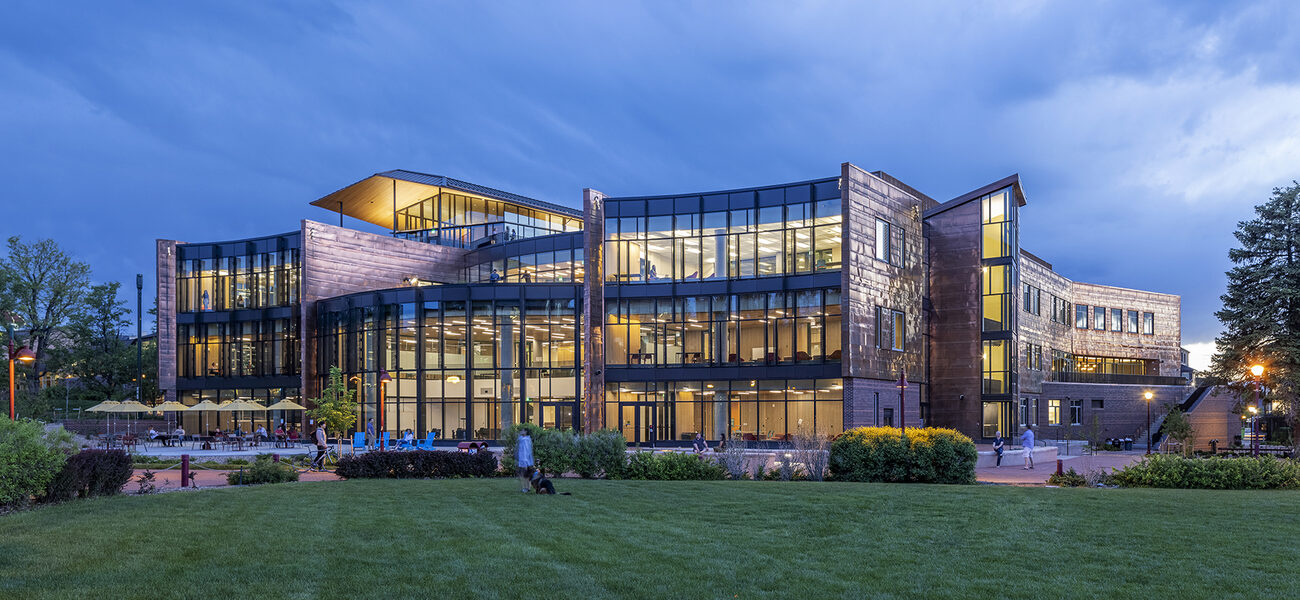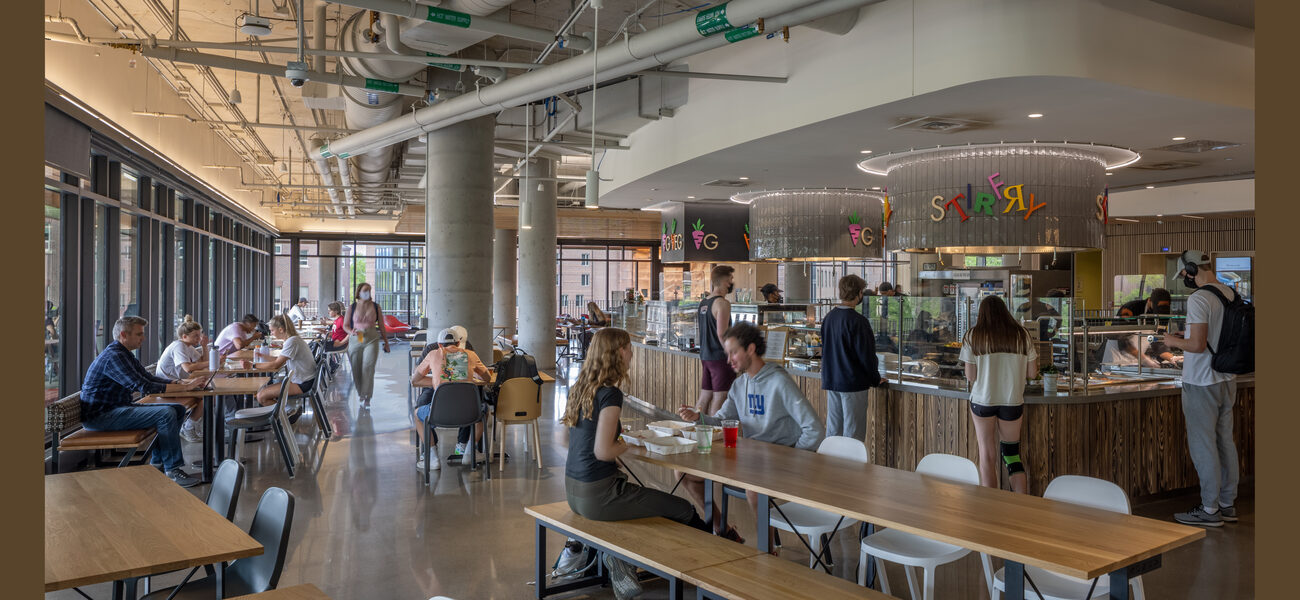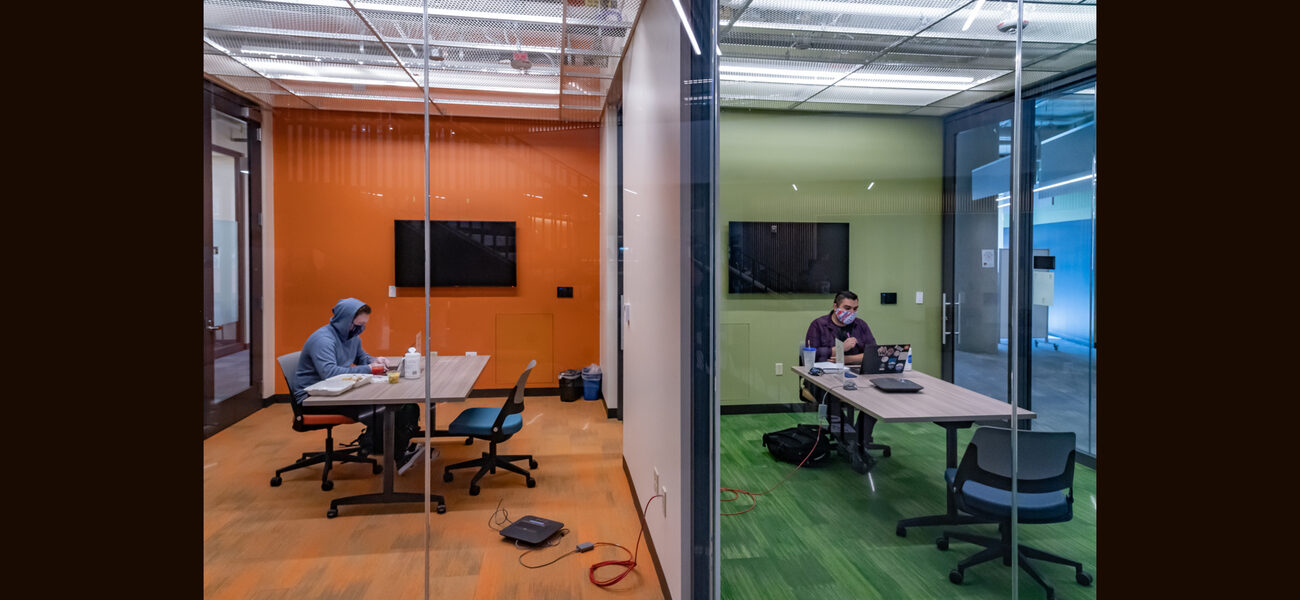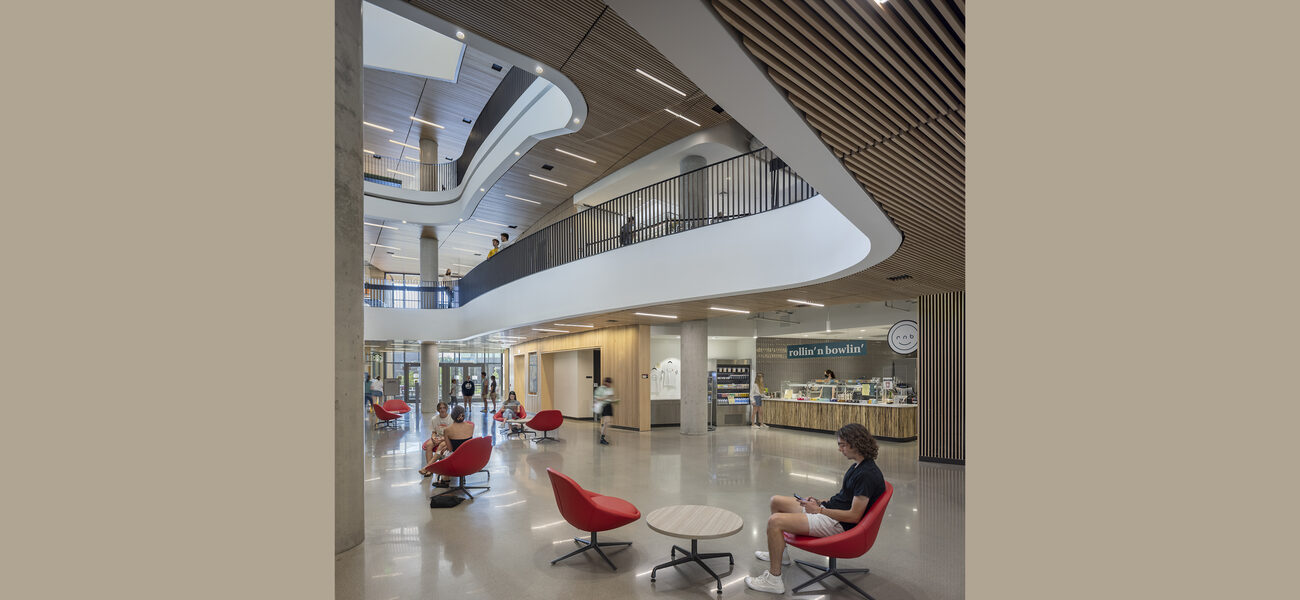The new Community Commons at the University of Denver (DU), one of three major new buildings that opened at the school’s campus this fall, serves as the centerpiece of a student-oriented campus neighborhood that also includes a new residence hall and career center. The Commons is designed to provide students the knowledge, resources, and relationships they need to navigate their college experience, with gathering spaces, support services, and centralized dining options. It was designed in direct response to the goals established in the university’s strategic plan to center, elevate, and enrich the student experience.
The Commons hosts a concentration of campus dining, featuring an array of nine different micro-concept kitchen spaces serving multicultural cuisines in the Grand Central Market on the second floor. More than 700 people can gather inside or on the courtyard terrace that wraps around the outside of the food hall and offers mountain views. None of the spaces in the Commons serves just a single purpose, most notably the Grand Central Market. Unlike more traditional dining halls, the entire space is open. Students swipe in at the various food options and then sit wherever they’d like, including on one of two porches. Off hours, when the food platforms are closed, the dining space is open for student activities, meetings, and social gatherings.
The building also has dedicated space for many student clubs and organizations, such as study abroad, academic advising, student outreach and support, international student and scholar services, and veteran services. It features separate lounges for both undergraduate and graduate students, with a connecting balcony that overlooks the Campus Green. And like DU’s undergraduate and graduate students, faculty now also have their first dedicated gathering space outside of their individual offices. This faculty lounge Green provides an intimate conversation area around a central fireplace and also benefits from views out onto the Campus.
The Community Commons, which replaces a student services center built in 1984, welcomes an increasingly diverse community and brings a critical mass of students and resources to the heart of campus. Its open floor plan, providing visual connection both vertically and horizontally, proved particularly beneficial in response to COVID restrictions when it opened in January. All of the dining options offered grab-and-go meals, and the students could go anywhere in the building to eat with friends while still maintaining a safe distance. Many of the open areas were immediately repurposed as teaching and learning spaces.
The Commons strengthens campus identity and recognizes that less formal buildings appeal to today’s students. The building conveys a sense of openness and invitation through transparency and reinforces an inclusive sense of belonging by celebrating diverse cultures and student-focused services under one roof.
Patterned local copper across the building’s exterior is inspired by the geological context of local canyons, while exterior sunshades and vertical fins reduce solar heat gain and glare. A central canyon-like space, with a north-facing clerestory, also offers access to daylight.
Other features that contribute to health and wellness of the campus community include bridges for small group gatherings, central stairs, and outdoor terraces providing easy access to outdoor air throughout the building. A rooftop restaurant and bar area connects users directly to nature, while a second flexible rooftop activity zone also provides opportunity for educational programming or student life amenities. At this same roof level, a pavilion of multi-use space is surrounded by the largest green roof on the university’s campus.
Operable windows, low-emitting materials, displacement air, and individual controls also support indoor air quality, comfort, and wellbeing.
This integrated suite of high-performance operating systems and nature-integrated design solutions utilized throughout the building reduce total energy use by 49 percent below ASHRAE baseline.
| Organization | Project Role |
|---|---|
|
Moore Ruble Yudell Architects & Planners
|
Design Architect
|
|
Anderson Mason Dale Architects
|
Executive Architect
|
|
Saunders Construction
|
Construction Manager
|
|
Martin/Martin
|
Structural / Civil Engineering
|
|
Cator, Ruma & Associates
|
MEP Engineering
|
|
Didier Design Studio
|
Landscape Architect
|
|
Advanced Consulting Engineers
|
Code Consultant
|
|
K2
|
Acoustics / AV Consultant
|
|
Laschober + Sovich
|
Food Service Consultant
|
|
The Capital Projects Group
|
Cost Estimating Consultant
|
|
Energetics Consulting Engineers
|
Energy Modeling Consultant
|
|
France Sustainable Solutions
|
Sustainability Consultant
|
|
Lerch Bates
|
Elevator Consultant
|




